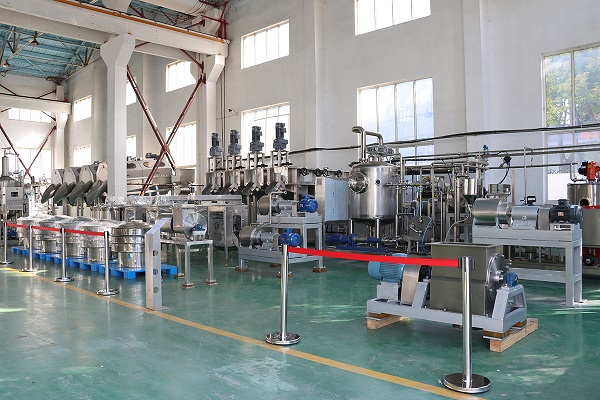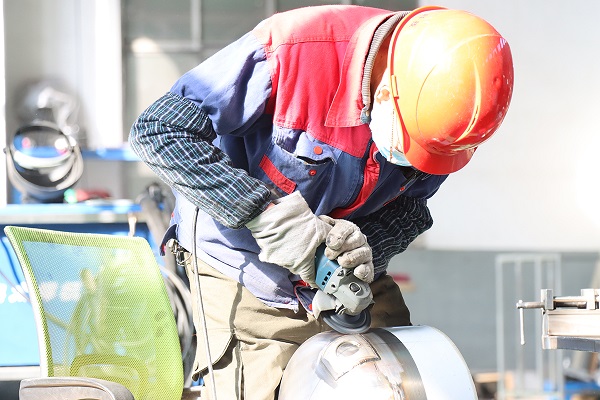Mango Processing Line
- What is the production line of mango processing?
The mango processing line typically involves a series of steps aimed at transforming fresh mangoes into various mango products, for example: mango pulp, mango puree, mango juice, etc. It goes through a series of industrial processes such as mango cleaning and sorting, mango peeling, mango fiber separation, concentration, sterilization and filling to produce different products such as mango pulp, mango puree, mango juice, mango puree concentrate, etc.
-
What are the stages of mango production
Below is a description of the application of the mango processing line, highlighting its stages and functions.
Receiving and Inspection:
Mangoes are received from the orchards or suppliers. Trained personnel inspect the mangoes for quality, ripeness, and any defects or damages. Mangoes that meet the specified standards proceed to the next stage, while rejected ones are separated for disposal or further processing.
The fruit undergoes two cleaning processes at this stage: soaking in air blowing and washing machine and showering on elevator.
After cleaning, the mangoes are fed into the roller sorting machine, where staff can effectively inspect them. Finally, we recommend finishing the cleaning with the brush cleaning machine: the rotating brush removes any foreign matter and dirt stuck to the fruit.
Mangoes undergo thorough washing to remove dirt, debris, pesticides, and other contaminants. High-pressure water jets or sanitizing solutions are used to ensure cleanliness.
Peeling and Destoning and Pulping Section
Mango Peeling and Destoning and Pulping Machine are specially designed to automatically stone and peel fresh mangoes: by precisely separating the stone and skin from the pulp, they maximize the yield and quality of the final product.
The unbeaten mango puree enters the second chamber or an independent beater for beating and refinement to improve product quality and output.
Additionally to inactivate enzymes, mango pulp can be sent to the tubular preheater, which can also be used to preheat unrefined pulp before pulping to achieve higher yields.
An optional centrifuge can be used to eliminate black spots and further refine the pulp.
Vacuum Deaeration or Concentration
Both types of equipment can produce different products through different options.
The first method vacuum degasser can be used to remove gases from the product and avoid oxidation to improve the quality of the final product. If the product is mixed with air, the oxygen in the air will oxidize the product and the shelf life may be shortened to some extent. In addition, the aromatic vapor can be condensed through the aromatic recovery device attached to the degasser and directly recycled back into the product. The products obtained in this way are mango puree and mango juice
The second method evaporates water through the concentrated evaporator to increase the brix value of mango puree. High brix mango puree concentrate is very popular. High brix mango puree is usually sweeter and has a richer taste because it contains a higher sugar content. In comparison, low brix mango pulp may be less sweet and have a lighter taste. In addition, mango pulp with high brix tends to have a richer color and a more vivid color. High brix mango pulp may be easier to handle during processing because its thick texture can provide better viscosity and fluidity, which is beneficial to the production process.
The main purpose of sterilizing mango pulp is to extend its shelf life and ensure product safety. Through sterilization treatment, microorganisms in the pulp, including bacteria, molds and yeasts, can be effectively eliminated or inhibited, thereby preventing the pulp from spoiling, deteriorating or causing food safety problems. This is done by heating the puree to a specific temperature and holding it for a certain period of time.
Packaging can choose aseptic bags, tin cans and plastic bottle. Packaging materials are selected based on product requirements and market preferences. Packaging lines include equipment for filling, sealing, labeling, and coding.
Quality Control:
Quality control checks are conducted at each stage of the production line.
Parameters such as taste, color, texture, and shelf life are evaluated.
Any deviations from the standards trigger corrective actions to maintain product quality.
Storage and Distribution:
Packaged mango products are stored in warehouses under controlled conditions.
Inventory management systems track stock levels and expiry dates.
Products are distributed to retailers, wholesalers, or exported to international markets.




1. Mango juice/pulp production line could also process fruits with similar characteristics.
2. Use the high performance of the mango corer to effectively increase the mango yield.
3. The mango juice production line process is fully automatic PLC control, saving labor and facilitating production management.
4. Adopt Italian technology and European standards, and adopt the world's advanced technology.
5. Including tubular UHT sterilizer and aseptic filling machine to produce high-quality sterile juice products.
6. Automatic CIP cleaning ensures the food hygiene and safety requirements of the entire line of equipment.
7. The control system is equipped with touch screen and interactive interface, which is easy to operate and use.
8. Ensure operator safety.
What's the product can mango processing machine make? such as:
1. Mango Natural Juice
2. Mango Pulp
3. Mango Puree
4. Concentrate Mango Juice
5. Blended Mango Juice




Shanghai EasyReal Machinery Co., Ltd was established in 2011, specializing in manufacturing fruit and vegetable processing lines, such as mango processing line, tomato sauce production lines, apple/pear processing lines, Carrot processing lines, and others. We are committed to providing users with a full range of services from R&D to production. We have obtained CE certification, ISO9001 quality certification, and SGS certification, and 40+ independent intellectual property rights.
EasyReal TECH. provides the European level’s solution in liquid products and has received widespread praise from both domestic and overseas customers. Thanks to our experience over 220 whole customized turn-key solutions of fruits and vegetables with a daily capacity from 1 to 1000 tons with internationally developed process with high-cost performance.
Our products have won a great reputation at home and abroad and have already been exported to all over the world including Asian countries, African countries, South American countries, and European countries.



Growing demand:
As people's demand for healthy and convenient foods increases, the demand for mangoes and their products is also growing. As a result, the mango processing industry is booming, and in order to meet market demand, more efficient and advanced processing lines need to be established.
Fresh mango supply seasonality:
Mango is a seasonal fruit with a limited maturity period, so it needs to be stored and processed after the season is over to extend its sales cycle. The establishment of the mango pulp/juice production line can preserve and process ripe mangoes into various forms of products, thereby achieving the goal of providing mango products throughout the year.
Reduce waste:
Mango is one of the perishable fruits and easily deteriorates after ripening, so it is easy to cause waste during transportation and sales. Establishing mango pulp production line can process overripe or unsuitable mangoes for direct sale into other products, reducing waste and improving resource utilization.
Diversified demand:
People's demand for mango products is not limited to fresh mangoes but also includes mango juice, dried mango, mango puree and other products in various forms. The establishment of mango puree production lines can meet the diverse needs of consumers for different mango products.
Export demand:
Many countries and regions have large import demand for mangoes and their products. Establishing mango juice production line can increase the added value of mango products, enhance their competitiveness, and meet the needs of domestic and foreign markets.
To sum up, the background of the mango processing line is the growth and changes in market demand, as well as the urgent need to increase the added value of mango products and reduce waste. By establishing processing lines, market demand can be better met and the competitiveness and profitability of the mango processing industry can be improved.












